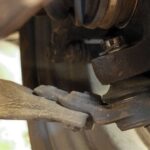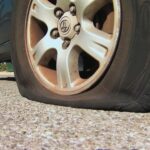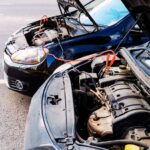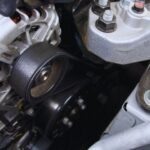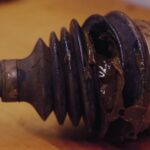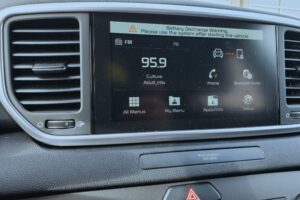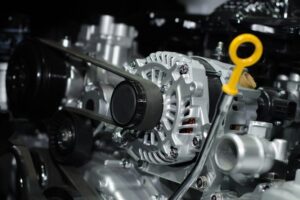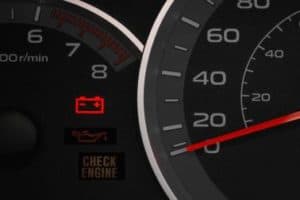If your car frequently stalls or won’t start, it could be caused by a faulty alternator or battery. So, which one is the culprit? What are the signs of a bad car battery vs alternator?
When an alternator stops working properly, it could cause a wide range of symptoms. These could include:
- A faulty battery
- Faulty electrical accessories
- Recurring engine stalls and cranking problems
- Too bright or weak headlights
- Dimming of interior lights
- Car noises
- Warning lights are on
- Burnt smell
Read on to learn more about the signs of a bad battery vs a bad alternator.
How Do the Battery and Alternator Work Together?
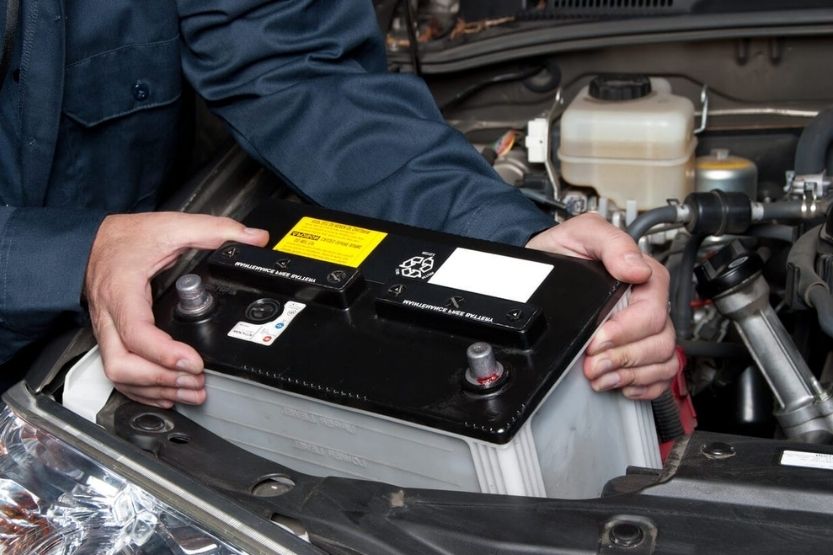
The battery usually gets the blame when a car has trouble starting. Rarely do people consider the alternator. To know whether you have a faulty car alternator or battery, learn how the two work together to keep your engine running:
1. Car’s Battery Provides Short Bursts of Electricity
Your car’s electrical charging system consists of three components:
- Alternator,
- Battery, and
- Voltage regulator.
When you start your car, the battery provides short bursts of electricity to the electrical components in your car. This starts your engine, which in turn runs the alternator.
2. Alternator Generate a Continuous Supply of Electricity
The next step is to generate a continuous supply of electricity, which the engine and battery can’t do. That’s when the alternator comes in.
Alternator Converts the Mechanical Into Electrical Energy
The alternator’s function is to convert mechanical energy into electrical energy. The rotor and stator in the alternator work together to generate alternating current (AC), which is eventually transformed into a direct current (DC).
Alternator Has to Produce a Higher Voltage Than the Battery
The alternator should produce a slightly higher voltage than the battery voltage to charge your car battery. Then, the voltage regulator safely delivers a steady flow of electricity from the alternator to the battery.
3. A Faulty Alternator Cannot Function if the Battery Fails
When all three parts work together harmoniously, they provide the perfect combination of power to keep your car running. But over time, they wore out and can affect the performance of each other.
If the alternator stops working properly, the battery won’t have enough power to start your car. On the other hand, the alternator won’t kick in if the battery fails.
5 Signs of a Bad Battery
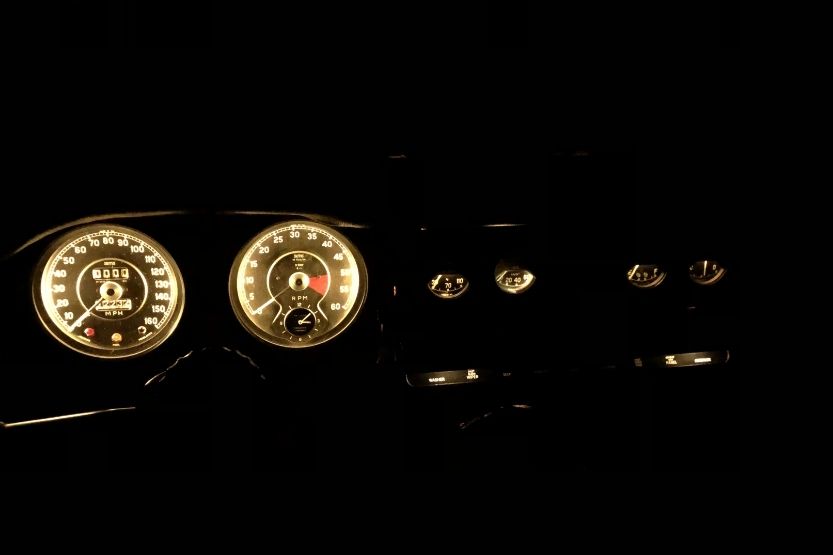
1. Dim or Flickering Dashboard Lights
Too Dim Dashboard
A small amount of dimming of the dashboard lights is usually normal while your car turns over. However, if they get too dim that it’s already difficult to read your dashboard alerts and information, it can be a warning that your car needs maintenance or repair.
A possible cause of dimming or flickering dashboard lights include the following:
- Dried Battery,
- Corrosion, or
- Loose battery.
Flickering Headlights and Interior Lights
Usually, if the battery is the main problem, your headlights and interior lights would also dim or flicker. Remember: The battery is one of your car components responsible for its electrical system.
2. Presence of Corrosion
Corrosion on car battery terminals usually looks flaky and greenish or whitish. You should never ignore this. If the corrosion is extensive, have professional take care of it.
Some of the possible causes of a corroded car battery:
Age
Batteries become susceptible to corrosion as they get older. To avoid this, make sure to replace your car battery if it’s already close to five years old or when it starts to have wear and damage.
Overcharging
Overcharging could lead to corrosion because it increases the battery’s temperature. As the temperature rises, the electrolyte volume expands, or worse, boil acidic gases through the vent caps. The escaping sulfuric acid can cause corrosion of the battery terminals.
If a lead-acid battery becomes damaged, it can leak a highly corrosive electrolyte solution.
3. Slow Start or No Start
If your car randomly won’t start or has become more challenging, suspect a corroded or failing battery, or a dirty battery.
But is it possible that a bad starter or alternator causes a slow engine start or no start?
If your car instantly stalls, a faulty alternator could be the problem. However, if your car engine starts and stays running but behaves unpredictably later, it’s probably a faulty battery. If the problem is the starter, which doesn’t happen often, it might crank the engine too slowly to start or don’t crank the engine at all.
4. Rotten-Egg Smell
That smell of rotten egg or sewer water signifies your car battery is dying.
As the temperature increases, the sulfuric acid in your car battery turns into hydrogen sulfide. Hydrogen sulfide smells like rotten eggs at low concentrations and smells sweet at high concentrations.
Again, if it stinks, then it’s time to replace your car battery as soon as possible.
5. Warped Battery
Overcharging
Swelling or warping a car battery happens for different reasons, such as overcharging. If the battery is overcharged—perhaps due to a faulty voltage regulator—it leads to excessive build-up of hydrogen gas. This causes the cell plates and outer casing to warp and swell.
Do Not Repair or Remove a Swollen Car Battery
If your car battery is swollen or bloated, it’s never a good idea to repair or remove it. It could put your life in danger if it ends up exploding.
How Do You Ensure the Health of Your Car Battery?
One of the simplest ways to keep it working properly is to drive your car long enough for the alternator to charge it. If you drive your car very little, one solution is to have a tire service shop wire a tiny charger (battery tender) directly to the battery.
Again, bad battery vs bad alternator – what is the difference? Jumpstarting might work if you have a battery issue due to corroded terminals. However, a dead battery can also be due to a faulty alternator, electricity demand from fuses, alarms, sound systems, and more.
5 Signs of a Bad Alternator
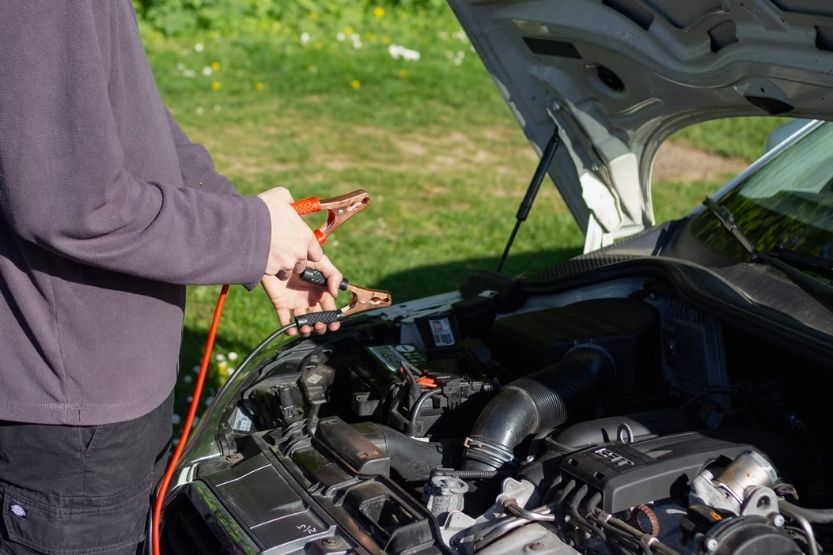
An alternator typically lasts as long as the car’s life. However, that’s not always what happens. In some cases, you have to replace it once it reaches the 100,000 or 150,000-mile mark.
Once an alternator becomes faulty, your car will only run briefly. Without it, your car will eventually fail to restart or won’t start at all once the battery runs out of power.
Here are a few signs to look for to help you determine if you have a bad alternator:
1. Dim Interior Lights and Headlights
Like the battery of your car, the alternator plays a crucial role in the generation and distribution of electricity. It recharges the battery to provide the necessary juice to the starting motor.
A Healthy Alternator Can Supply Around 13.5 to 15V
An alternator can supply around 13.5 to 15 volts if it’s healthy. When you’re checking the status of your alternator, it should put out at least 13 volts.
Dimming Interior and Dashboard Lights
Another way of knowing if the alternator is working as intended is to note the brightness of your car’s interior lights and dashboard lights. If they slowly dim or flicker while the engine is running, it could mean that the alternator doesn’t produce enough power to keep the electrical components of your car working properly.
2. Unusual Noises from Your Car
Cars make a lot of unusual sounds—they could be benign or serious. If you hear growling or squealing noises coming from under your hood, there’s a good reason to suspect that it’s due to a faulty alternator, especially if it occurs with other signs we’ve mentioned.
Why Does the Alternator Make These Growling or Whining Sounds?
Inside your alternator, there’s a set of deep-groove ball bearings, which are mounted on the rotor shaft. Sometimes, if there’s too much heat or dirt around the alternator, it could cause the bearings to wear out. As they develop flat spots, you’ll start hearing sustained and loud grinding or whining noises when you go faster.
Replace the Alternator
Have a professional check it ASAP. In most cases, the only solution is to replace the alternator. You can replace the (pulley) bearing on most alternators. However, it can be challenging to remove the alternator, so it might be better to let a reputable auto shop do the job.
Check for Worn Drive or Serpentine Belt
The drive belt, also known as the serpentine belt, keeps the alternator running effectively and smoothly. But eventually, it becomes worn or damaged, causing it to slip on the alternator’s pulley wheel. One of the indicators of drive belt slippage is growling, squealing, or whining sounds.
3. Burning Rubber Smell
There are many possible culprits of the burning-rubber smell coming from your car. It could be the air conditioner, coolants, exhaust, brake pads, or exhaust leaks. But in other times, the smell of burning rubber or electrical wires could come from the alternator.
Worn Down or Misaligned Belts
The alternator works with a series of belts and pulleys constantly under tension and friction. Eventually, these belts wear down and become misaligned. This could cause friction and overheat, which in turn causes the burnt smell.
Loose or Frayed Wires
There are three wire types in a three-wire alternator. If any of them become loose or frayed, it could cause electrical resistance, and an overheat alternator. It could further damage the wires and produce a burning odor comparable to rubber or an electrical fire if this happens.
4. Dead Battery
You might be slightly confused right now. Isn’t this supposed to be a battery-related issue?
Remember: the alternator is a car’s built-in recharging system. Along with the voltage regulator, it supplies electricity to charge the battery. If it’s not working properly, you’ll end up with a dead battery at your next attempt to crank the starter engine.
Malfunctioning Plates
But the alternator doesn’t just break down immediately. It does so in stages. As its three plates rotate across separate copper wires, an alternator can produce power. Over time, each of these plates could malfunction and stop producing enough electricity. The more plates malfunction, the less electricity they generate, eventually leaving you with a dead battery.
Regularly Test the Alternator Using a Voltage Tester
Regular testing of your alternator plates using a voltage tester is an excellent way to check if they’re starting to wear out. Fortunately, most automotive parts shops offer this service for free, although you might need to remove your alternator to get it tested.
If the voltage reading is less than 12 volts when under a load, it’s a good indication that your alternator is failing. A good reading is between 12 and 13.5 volts.
5. Look for the Warning Light
Most car models have had a built-in warning dash light for alternator issues in the past few years. In some cars, the warning is a battery icon. Other cars will have the word “Battery” flashing as a warning. It could also show as “GEN” or “ALT,” which signifies generator and alternator.
Warning Flashes Even After Two Seconds
If you’ve noticed, the battery light usually comes on whenever you start your car. However, it will only stay on for around one to two seconds. If it lingers longer than that, even when your car is already running, it might mean that you have a problem with your alternator. Get it checked as soon as you can.
Car’s Computer System Monitors the Alternator’s Electricity Output
This warning light is connected to your car’s computer system, which operates almost everything, including the distribution of power to the different electrical devices of your car. It also determines which devices lose power first. For instance, if your alternator stops working properly, the computer system might cut off the power of your stereo before the headlights.
This computer system also monitors your alternator’s electricity output. If the alternator’s output exceeds or falls behind the set limit, it will activate the warning light.
Could You Still Drive Your Car If You Have a Bad Alternator?
Technically, you still can. However, it’s not recommended. If there’s still enough power left, you’ll only have minimal time—around 30 minutes to an hour—before your car stalls or won’t restart. If the battery isn’t charged immediately, your car’s electrical systems will soon fail.
What Happens When Alternator Goes Bad While Driving?
Conclusion – Bad Alternator Vs Bad Battery
Diagnosing car starting issues isn’t always straightforward. What might appear to be a weak battery problem could have a deeper cause. And since the symptoms of a bad battery and bad alternator often overlap, you might end up confused and frustrated. Remember, if it’s too complicated to troubleshoot, don’t hesitate to consult the professionals.
Read next:

